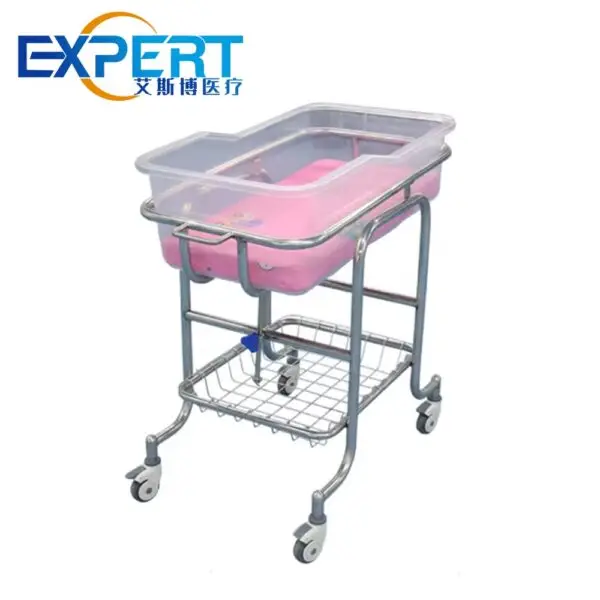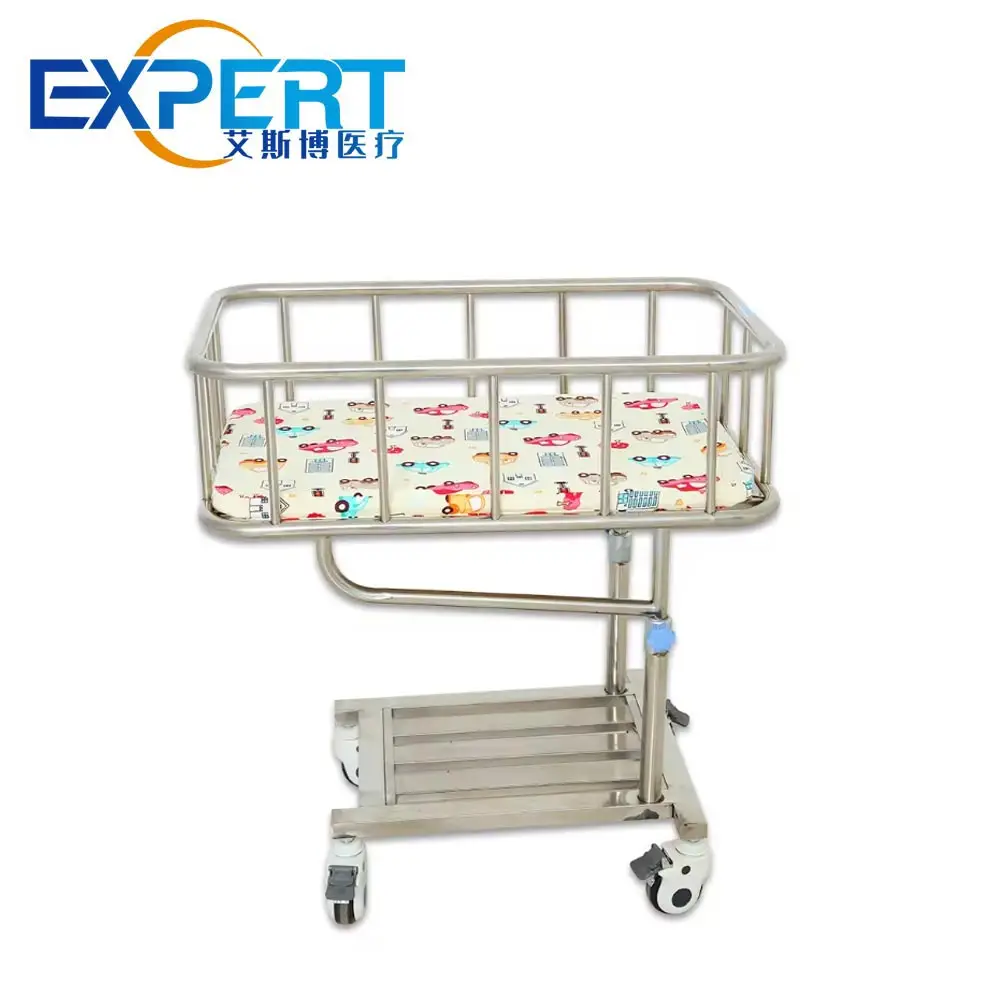Indirizzo
304 Il cardinale nord S.
Dorchester Center, MA 02124
Ore di lavoro
Dal lunedì al venerdì: 7:00 - 19:00
Fine settimana: 10:00 - 17:00
Indirizzo
304 Il cardinale nord S.
Dorchester Center, MA 02124
Ore di lavoro
Dal lunedì al venerdì: 7:00 - 19:00
Fine settimana: 10:00 - 17:00

Dalla protezione contro le cadute al supporto dei trattamenti medici, i lettini da ospedale svolgono un ruolo fondamentale negli ambienti sanitari pediatrici.
Benvenuti nel mio blog!
Prima di immergerci nei contenuti, mi piacerebbe che ti unissi a me sulle mie piattaforme social, dove condivido altre intuizioni, interagisco con la community e pubblico aggiornamenti. Ecco come puoi metterti in contatto con me:
Facebook:https://www.facebook.com/profile.php?id=100071234835011
LinkedIn:https://www.linkedin.com/company/74943205/admin/dashboard/
YouTube:https://www.youtube.com/@shandongexpertmedicalequip4695
TikTok:https://www.tiktok.com/@expertmedical
Ora, iniziamo il nostro viaggio insieme. Spero che tu trovi il contenuto qui perspicace, coinvolgente e prezioso.

In pediatric wards, ensuring the safety and comfort of young patients is of utmost importance. One of the critical components in providing optimal care is the hospital crib bed. These beds are specifically designed to meet the needs of infants and young children in medical settings. From safeguarding against falls to supporting medical treatments, hospital crib beds play a vital role in pediatric healthcare environments. In this blog, we’ll explore why hospital crib beds are essential for pediatric wards, discuss their key features, and answer common questions about their use.
A hospital crib bed is designed with a range of features that set it apart from a standard crib. These features ensure that both the child’s comfort and safety are prioritized, making them ideal for medical settings where close monitoring and treatment are required.
Adjustable Height and Rails
One of the primary features of a hospital crib bed is its adjustable height and safety rails. The ability to adjust the height makes it easier for healthcare providers to administer care without straining themselves. The rails provide protection from falls and can be raised or lowered as needed, ensuring the child is secure at all times.
Medical Equipment Integration
Hospital crib beds are designed to accommodate medical equipment such as IV poles, oxygen tubes, and monitoring devices. This integration allows for a seamless and safe environment for both the healthcare team and the child.
Mobilità e meccanismo di bloccaggio
Many hospital crib beds come with wheels that enable easy transportation of the patient within the ward. These wheels typically have a locking mechanism to keep the crib in place when necessary, providing both flexibility and stability.
Comfortable and Hygienic Materials
Comfort is a key consideration in pediatric care. Hospital beds are equipped with mattresses made from hygienic, easy-to-clean materials. This helps maintain a sterile environment, reducing the risk of infections and ensuring the child’s comfort during their stay.
Support for Medical Procedures
Hospital beds are designed to provide optimal positioning for various medical procedures, such as exams and treatments. They are often equipped with features like tilting or reclining capabilities to accommodate the needs of both the patient and healthcare professionals.


| Caratteristica | Descrizione | Beneficio |
|---|---|---|
| Adjustable Height and Rails | Height can be adjusted; rails offer protection from falls | Easy access for caregivers; ensures child safety |
| Medical Equipment Integration | Space for IV poles, monitors, and oxygen tubes | Seamless care with all necessary medical devices in one location |
| Mobilità e meccanismo di bloccaggio | Wheels allow movement; locks provide stability | Flexibility in patient transport; stable during treatments |
| Comfortable, Hygienic Mattress | Made from antibacterial, easy-to-clean materials | Prevents infections; ensures comfort for the child |
| Support for Medical Procedures | Features such as reclining or tilting positions | Helps with specific medical treatments and exams |
Enhanced Safety for Young Patients
The primary role of a hospital crib bed is to ensure the safety of young patients. Infants and toddlers are naturally more active and prone to accidents such as falls. The high rails and locking mechanisms of hospital crib beds provide the necessary safeguards to prevent injuries. In a healthcare setting, where children may be restless or unwell, these safety features are critical.
Improved Accessibility for Healthcare Providers
Medical professionals need to have easy access to their young patients without causing discomfort. Hospital beds are designed with adjustable height settings, allowing healthcare providers to perform examinations, administer treatments, or attend to emergencies without straining themselves or causing distress to the child. This functionality is vital in pediatric wards where frequent monitoring is required.
Integrazione con apparecchiature mediche
Pediatric care often involves the use of specialized medical equipment, including IV drips, oxygen tubes, and monitoring devices. A hospital bed provides integrated solutions for attaching and organizing these devices around the bed, ensuring that children receive continuous care without disruption. This integration helps in minimizing clutter and enhances the efficiency of medical treatments.
Comfort and Hygiene
Hospital environments must prioritize hygiene to prevent infections, particularly in pediatric wards where young children are more vulnerable. Hospital beds are designed with antibacterial, easy-to-clean materials that meet stringent healthcare standards. Additionally, the mattresses used are comfortable, ensuring that children remain at ease during their stay.
Support During Medical Procedures
Certain medical procedures require children to be positioned at specific angles. Hospital crib beds often come with features that allow for reclining, tilting, or even complete adjustments to assist in these procedures. This ensures that medical interventions can be carried out smoothly and efficiently while minimizing discomfort for the child.

When selecting a hospital crib bed for a pediatric ward, there are several factors to consider to ensure it meets the needs of both the medical staff and the patients.
Caratteristiche di sicurezza
Safety should always be the top priority when choosing a hospital crib bed. Ensure the bed has high, lockable rails to prevent falls, as well as a sturdy locking mechanism for the wheels.
Ease of Access for Caregivers
Adjustable height is an essential feature in a hospital crib bed. This allows healthcare providers to care for children at a comfortable working height, reducing the risk of back strain and improving the child’s overall care experience.
Compatibilità con apparecchiature mediche
A hospital crib bed should have spaces or attachments for medical equipment such as IV poles and monitors. This feature ensures that all necessary equipment can be close to the child without overcrowding the space.
Durability and Cleanliness
Pediatric wards require furniture that is durable and easy to clean. Look for hospital crib beds made from high-quality materials that can withstand frequent cleaning and disinfection without degrading.
Mobility and Flexibility
The ability to easily move the bed within the ward is crucial. Look for beds with smooth-rolling wheels and secure locking mechanisms to ensure both flexibility and safety.
UN lettino da ospedale is an essential piece of equipment in pediatric wards, offering enhanced safety, comfort, and support for young patients. With its specialized design, this bed ensures that medical professionals can provide the best possible care while minimizing the risk of accidents and infections. By choosing the right hospital crib bed, healthcare providers can create a safe and supportive environment for children during their hospital stay. Whether it’s for monitoring, medical procedures, or ensuring the child’s comfort, the role of a hospital crib bed is indispensable in pediatric care.
Qual è la differenza tra un lettino da ospedale and a standard crib?
A hospital crib bed is specifically designed for medical use, featuring adjustable height, medical equipment compatibility, and enhanced safety features such as lockable rails and mobility options. Standard cribs are typically used for home environments and lack the specialized functionality needed for pediatric care.
Why are hospital crib beds necessary in pediatric wards?
Hospital crib beds provide a safe and comfortable environment for young patients, ensuring that they are protected from falls, positioned correctly for treatments, and easily accessible to healthcare providers.
Are hospital crib beds customizable for different medical needs?
Yes, many hospital crib beds offer customizable features such as adjustable height, tilt positions, and compatibility with medical equipment. This flexibility allows the bed to be adapted for various medical procedures and patient needs.
What safety features are included in a hospital crib?
Hospital crib beds typically include high, lockable rails to prevent falls, locking wheels for stability, and adjustable height settings to provide easy access for caregivers.
How do hospital cribs support infection control?
Hospital cribs are made from antibacterial, easy-to-clean materials that help prevent infections. Their design allows for quick and efficient cleaning between patient use, maintaining a hygienic environment in pediatric wards.